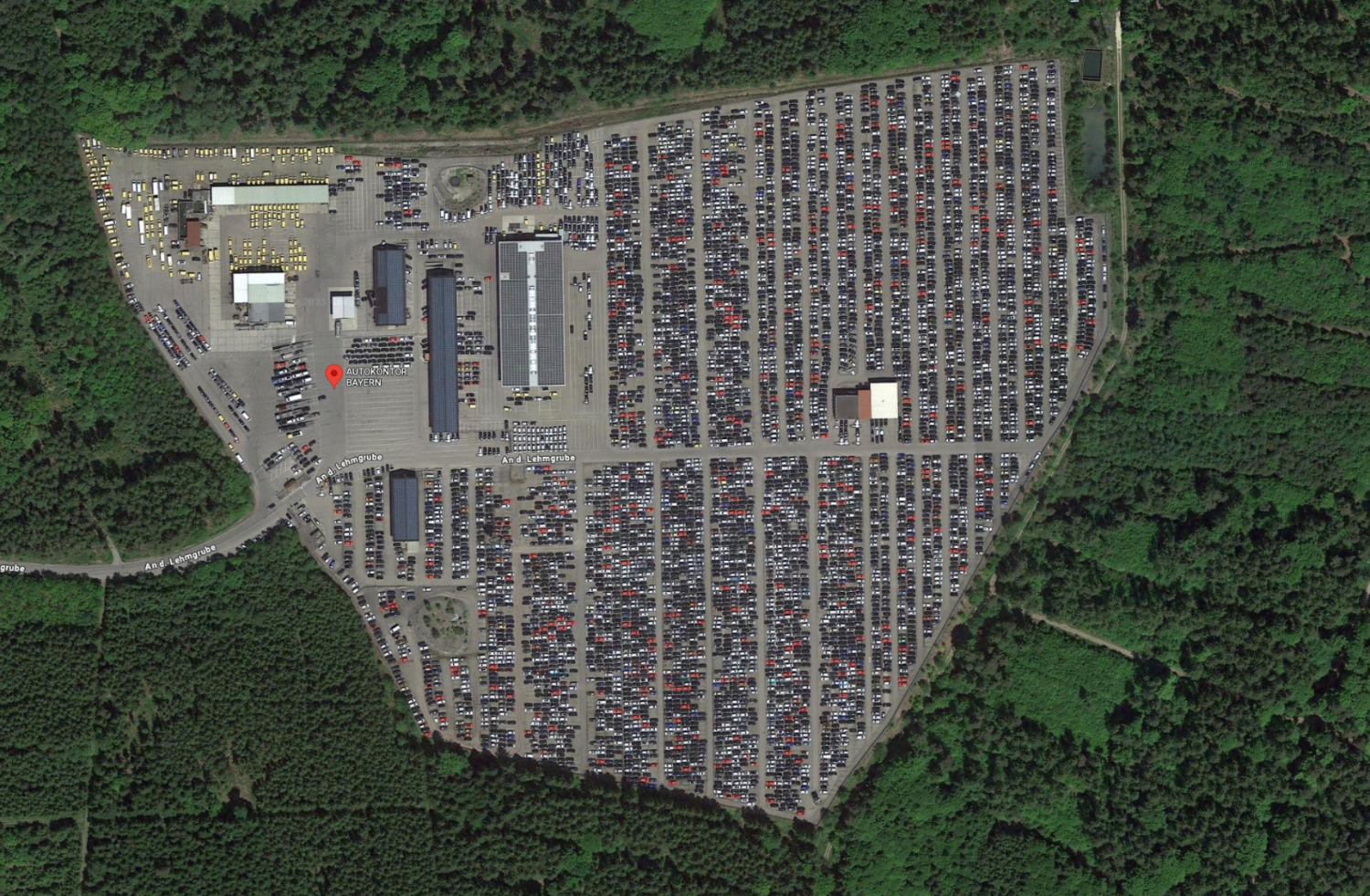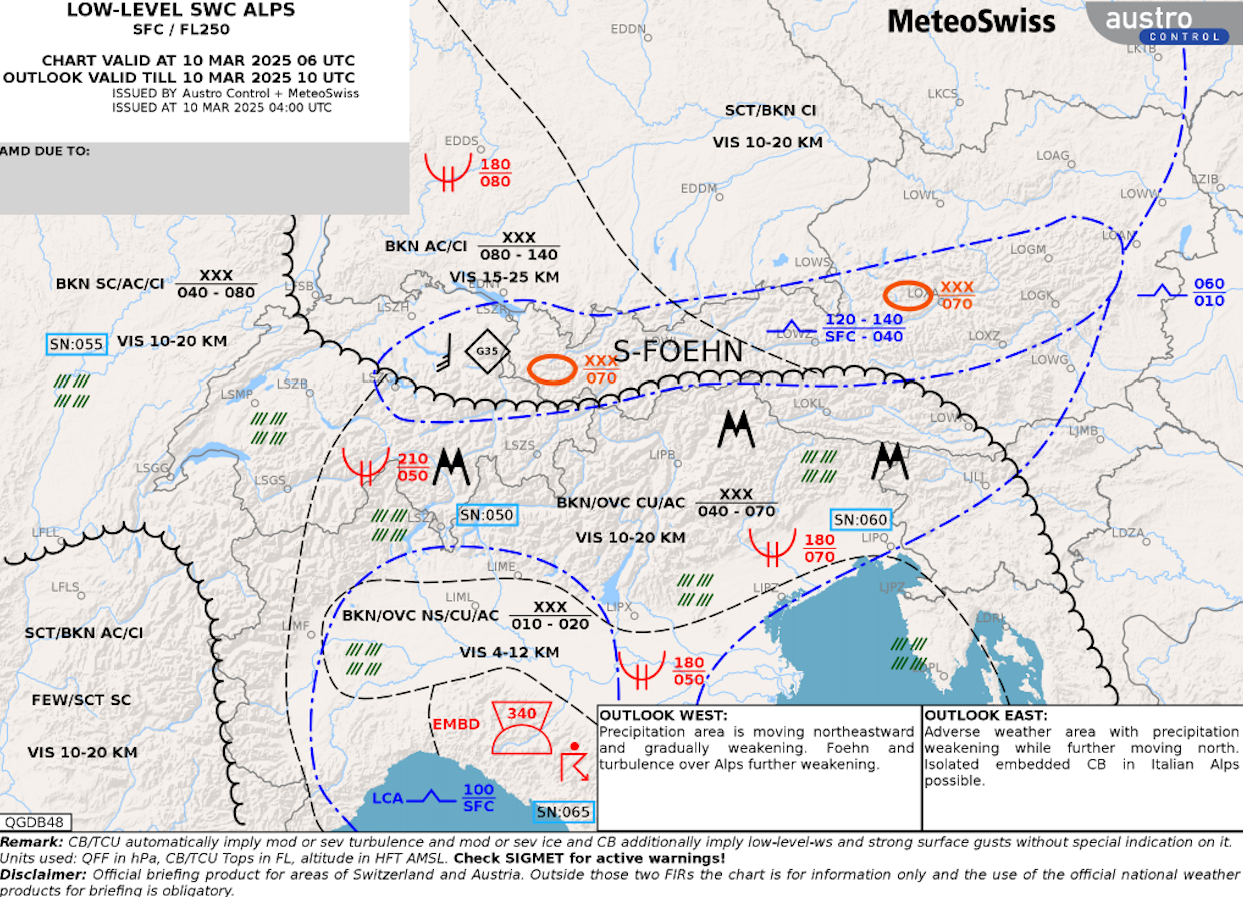-
Posts
159 -
Joined
-
Last visited
Profile Information
-
Gender
Male
-
Location
Germany
-
Reg #
N913KS
-
Model
M20R Ovation 2 GX
Recent Profile Visitors
MatthiasArnold's Achievements
-
I personally would choose something between 800 - 1000ft (the windmill power stations are getting higher an higher), but over here in Germany you have to stay in VMC until reaching at least MRVA (which is not officially documented, depends on time of the year (higher in winter) and, to my personal experience, on the ATC controller). My home base EDKA has now IFR procedures- so it can be challenging to depart or approach from/to IFR flights. A legal option is to commence cloud breaking procedures at an airport with IFR procedures and than try to proceed VFR.. Or, for IFR departure, somehow find your way to an airport with IFR procedures in VFR and commence on an IFR departure with an IFR pick up over a runway. You have to coordinate with the airport controller beforehand (via phone) and there are not many airports which are willing to do so .. filing a flight plan beforehand is a must have anyway.. Long story short, although I would pick 800ft, the typical minimum ceiling in Germany for a legal IFR pickup (and cancellation) is typically in the 2000ft AGL range.
-
2006 M20R with about 800h. App 1 qt per 15+hours. Oil refill at 6qt.
-

Ovation backup alternator test
MatthiasArnold replied to Tommooney's topic in Modern Mooney Discussion
^^^^This -

G1000 Mag/Var Database Update Failures
MatthiasArnold replied to Jeff_S's topic in Modern Mooney Discussion
Just did the update with 0401.37. Went as smooth as @LANCECASPER reported above. After updating the NavData of PFD and MFD the dialog is presented on the MFD. After confirming with OK the mag var database in the AHRS gets updated. When completed the AHRS reinitializes „Keep Wings Level”. Done. -
As depicted in the image provided by @GeeBee, the 7th probe (within the Ovation's G1000 internal configuration also called TIT although there is no turbo) measures the combined exhaust of cylinders #2, #4 and #6. Considering the fact, that per cylinder only one (short time) combustion event happens for two turns of the crankshaft, EGT sensor output signals are always kind of "averaging over time" and furthermore highly dependent on installation position, aging of the probe and so on. Thus their quantitative value is of limited meaning anyways. Since the 7th probe (aka TIT) is averaging the exhaust heat of not just one but three combustion events for every two turns of the crankshaft, it typically shows a higher value than the other EGT probes. The TITs probe numeric value is displayed on the left side engine EGT section of the MFD in all views but the engine view (where the 6 cylinder specific EGT's are shown instead). As stated above absolute EGT values are highly depended on a the individual install and also degradation of sensors over time, so take the absolute values in the following with a grain of salt: I typically utilize the 7th probe's measurement during LOP operations for a quick view of the current mixture setup instead of always toggling to the engine page. By comparing the mixture setup I achieved via the lean assist in the engine page on one hand with the resulting signal of this specific probe #7 o th either hand, I deducted the following "strategy" to judge current LOP operation conditions (only valid for my installation): TIT 1450F -> deep LOP cruise TIT 1500F - 1550F -> LOP cruise TIT 1550F - 1600F -> LOP climb out to flight levels while keeping cylinder #5 CHT under 390F ( after "deep mixture pull") For my installation I learned, that it is much easier to control #5 CHT <400F on the LOP side rather than during ROP operations. The initial climb is done in ROP anyways. However, for my flights crossing the Alps I typically have plenty of time to reach the required F140-F180 (depending on route and weather). Compared to the numbers given in the POH the (mostly) LOP climb takes a little bit longer than the ROP in the chart (say 34mins instead of 30mins). But most often actual density altitude is an even bigger factor in the overall equation. Don't want to start another LOP/ROP discussion. Just some thoughts on the G1000 Ovation's 7th EGT sensor and how I personally make use of it. Have a great weekend, Matthias
-

G1000 Mag/Var Database Update Failures
MatthiasArnold replied to Jeff_S's topic in Modern Mooney Discussion
This^^^ 0401.37 comes with GIA SW release 7.80.4 where the mag var db update should run smoothly per the SB provided above. -
Sounds a little bit like „Hotel California“: “You can check out any time you like, but you can never leave“ ..
-
https://www.google.com/maps/place/AUTOKONTOR+BAYERN+GmbH/@48.2093695,10.2422981,624m/data=!3m1!1e3!4m6!3m5!1s0x479bfccc28d7597f:0xab777d33c65ae655!8m2!3d48.2096824!4d10.2412281!16s%2Fg%2F1vn_xynh?entry=ttu&g_ep=EgoyMDI1MDkwMy4wIKXMDSoASAFQAw%3D%3D Autokontor Bayern - just a trader & storage of used cars (somewhere in the middle of nowhere ;-), street address: Autokontor Bayern An der Lehmgrube 1 D- 89290 Buch The address translates to something like "By the clay pit", so obviously the terrain of some ancient pit. That might be the reason why they are allowed to have such a business right within a forest (in Germany). And maybe they also store some new cars, where production was higher than demand ;-) Best, Matthias
-

Need some advice, moving from US to Berlin
MatthiasArnold replied to Justin Schmidt's topic in European Mooney Pilots
Hi Justin, there are a lot of N-Reg Mooney‘s operated in Germany and across Europe. ACG at EDFQ is an MSC with FAA certified A&P and IA. So no big problem regarding technical/maintenance issues. Obviously there are many additional topics to be considered when you stay in Europe for a longer time period (e.g., longer than six months or so), including but not limited to - insurance - EU import tax/VAT - license requirements (you will find many FAA approved flight instructors for BFR) - .. With EMPOA we also have a pretty active Mooney community/association in Europe. Simply reach out and ask more questions. Inviting @terbang and @Graf_Aviator to the thread. Best, Matthias -

Great Adds that have improved your airplane.
MatthiasArnold replied to flyingscot's topic in Ovation Owners
LHS, SVT (f you have glass), .. -

Precise Flight SpeedBrake 2000 - only one side extended
MatthiasArnold replied to Yariv's topic in Modern Mooney Discussion
If they have a rectangular shaped aluminium cover plate, visible from the top of the wing, they come out to the top. Gently push from the bottom of the wing until you can grab the the cover plate, then pull them out. Besides cleaning and greasing the worm gear with Aeroshell 22 (what else ;-), it is also a gapped idea to treat the microswitches with contact cleaner and actuating them several times. Also cleaning and servicing the AMP connectors with contact cleaner makes a lot of sense. During reassembly take care, that the chassis of the speed brakes remain in a rectangular alignment (instead of being skewed). Misalignment easily happens caused by the force of the springs acting on he chassis. For reinstall you have to align the drain tube with the small hole at the bottom of the wing. Either by putting a wire into the tube, push it through the bottom hole, guiding the tube during install - or - by putting a long screwdriver from the bottom of the wing through the hole (upside down of course), aligning the screw drivers blade with the drain top (from the top of course), guiding the drain tube through the small hole during install (typically two persons required for the second version). Best, Matthias -
Congratuations! Any additional tricks in addition to the combined findings about cabling & configuration in the G1000 and Garmin Flightstream in the Mooney thread ?
-

N-registered Mooney down in Slovenia
MatthiasArnold replied to Igor_U's topic in Mooney Safety & Accident Discussion
Correct -

N-registered Mooney down in Slovenia
MatthiasArnold replied to Igor_U's topic in Mooney Safety & Accident Discussion
Thanks to the exceptionally friendly service at AustroControl, I was able to obtain copies of the LLSWC charts for the Alps, created through a joint effort between MeteoSwiss and AustroControl. For me personally, these charts — hand-drawn by highly knowledgeable meteorologists from Switzerland and Austria who truly understand Alpine weather — are the primary weather source whenever I’m planning to cross the Alps. The accident occurred at approximately 0820Z. The two available charts were valid for 0600Z and 1000Z, respectively. So, the situation can be seen as a kind of average between the two charts. The flight originated from LDZA (Zagreb, Croatia), located towards the eastern part of the chart, and proceeded northwest towards LJLJ (Ljubljana, Slovenia). There were strong winds over the Alps and the Karawanken mountain range (between Slovenia and Austria), with a prevailing southerly Föhn and associated mountain waves over the Alps. Cloud build-up was occurring on the southern side of the Alps — at 0600Z, cloud coverage was BKN/OVC between FL030–FL060 with tops above FL250. By 1000Z, the situation had worsened with overcast nimbostratus (OVC NS) from FL030–FL060, again with tops above FL250, along with embedded cumulonimbus (CB) and thunderstorms (TS). Icing was present between FL070–FL180, and snowfall above FL060. While skies over LDZA were still clear at 0600Z, a thick cloud layer had already formed over LJLJ and was moving northeast. By 1000Z, this cloud layer covered the entire route from LDZA to Switzerland. Long story short — these were far from ideal conditions for flying directly from LDZA to Switzerland, even under IFR with TKS and additional equipment. (And remember — the flight was at FL095, which at least suggests it was filed as VFR.) A potentially better, though still quite turbulent route, would have been from LDZA north via Graz (LOWG) and Salzburg (LOWS) to Friedrichshafen (EDNY), but yeah, … Matthias For reference LLSWC Alps symbols -

N-registered Mooney down in Slovenia
MatthiasArnold replied to Igor_U's topic in Mooney Safety & Accident Discussion
True! Looking at the FlySto data provided by ASN, Speed and altitude remained stable until entering the right hand spiral/ turn, so no icing as root cause seems unlikely. Altitude was FL95, which may indicate VFR flight (maybe). On that day, weather conditions south of the Alps were unfavorable: QNH Milano 1009, QNH Zürich 1000 -> Föhn winds from south, Mountain waves over the Alps (I saw the Lenticularis clouds while skiing in Engelberg/Titlis, Switzerland), Cloud accumulation on the southern side of the Alps. Although the Slowenian “Karawanken” mountains are located further south/east of the main Alpine ridge, weather conditions there were likely unfavorable as well. All of this, of course, hypothetical ..







